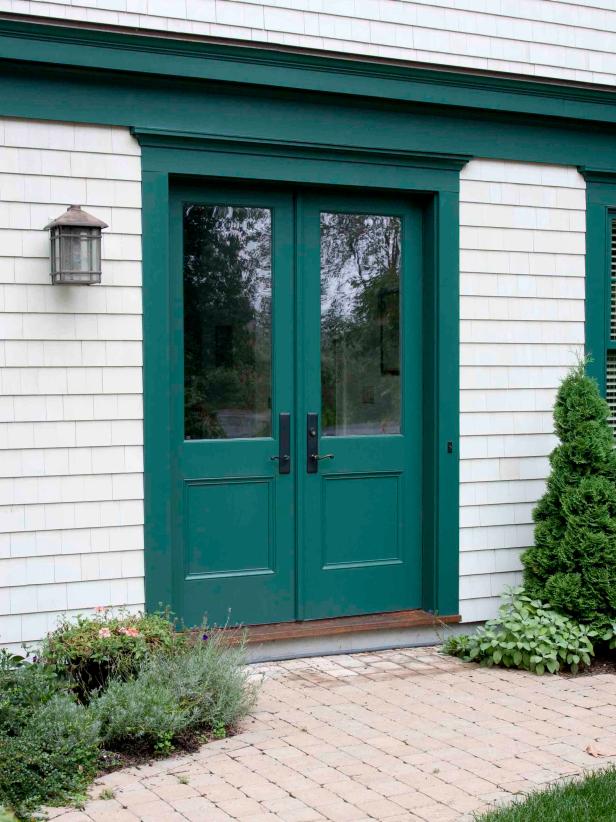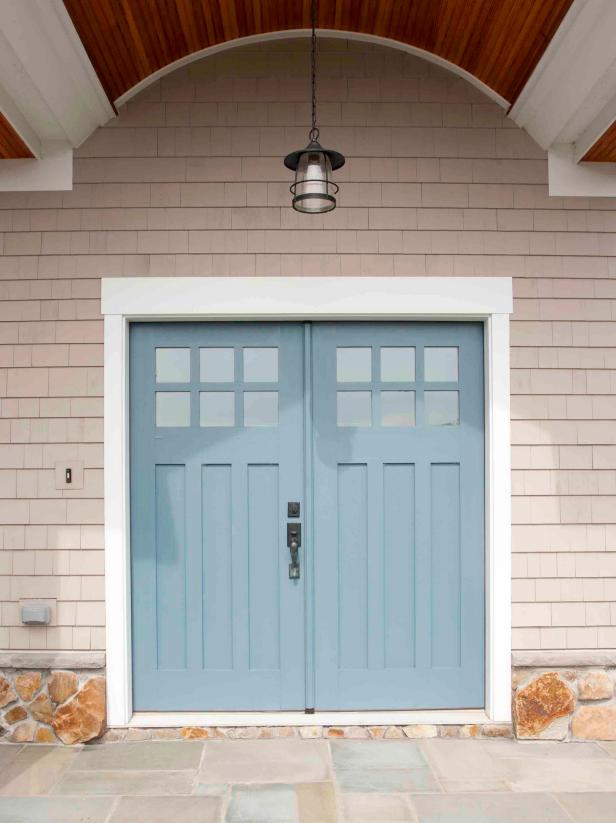Buying a condominium, townhouse, or single-family home within “a planned development” pretty much spares you much of the responsibility for the upkeep of your home and its surroundings. It also allows you to enjoy the use of swimming pools, gyms, and any other amenities available only to residents of the development. Unsurprisingly, though, these potential pluses come at a price to both your finances and your freedom as a homeowner.
Moving into a planned development often requires you to join the community’s homeowners association (HOA) and pay its fees to help cover the upkeep of common areas, shared structures, and exteriors. Membership also binds you to the association’s covenants, conditions, and restrictions, or “CC&Rs,” Those rules could thwart your dream of having a purple front door, say, or of leaving your RV in the driveway, since the CC&Rs typically include stipulations about the appearance of your home and the vehicles you can park outside it.
Statistically speaking, Americans have a one in five chance of living in a home that’s part of an HOA, according to a data analysis by applied microeconomist Wyatt G. Clarke. Since Clarke’s estimate was drawn up (in 2017), properties with HOAs have further surged.
Is life in a planned development a good option for you? And, if so, which ones have HOAs that may suit you best? The answers to those questions depend not only your finances but your enthusiasm for shared amenities, tolerance for rules and regulations, and comfort with self-government—since most HOAs are overseen by volunteers who live in the development.
Before you buy a home that makes you part of an HOA, here’s what you need to know, and the questions you should ask both the association and you and your family.
1. Fees Range Widely
A Trulia study which used American Community Survey records, found monthly HOA fees averaged $331 a month in 2015. Averages ranged from a low of $218 month in Warren, Mich., to a high of $571 in New York City. Trulia found dues to be generally higher in older buildings and complexes with more units overall.
The number and size of the development’s amenities also affect rates, according to Nate Martinez, a real estate agent at RE/MAX Professionals in Glendale, Ariz. For example, a development that’s guarded by a gate, and has a clubhouse and golf course is likely to levy higher fees than one that offers minimal security and only a modest common area.
Fees can differ even within a development, due to variations in square footage, location, and orientation, all of which can affect how much upkeep the property will require.
What to Ask
What are the home’s current fees and and what is it’s fee history?
Most multiple listing services (MLSs) include HOA fees in the property listing. That should ensure you can access the information through REMAX.com, Zillow.com, Realtor.com, and other listing sites, according to Martinez.
You should also find out how often fees have increased over time, and by how much. If you can, obtain a printed history of HOA dues by year for the past 10 years. Martinez says that the fees for an HOA are typically increased no more than annually.
Are future increases already planned?
In Martinez’s experience, HOA increases are customarily mapped out three to five years in advance, using estimates of the future costs of utilities, labor, maintenance, and more.
Examine these projections if they’re available. Since they’re only estimates, Martinez suggests you also check the the amount by which fees are permitted to increase every year under the HOA’s bylaws. In a new complex, that research can help determine whether initial HOA fees have been attractively, even artificially, underpriced in order to attract homeowners and are liable to increase significantly over time to cover the gap between revenue and costs.
Alternatively, the opposite can also be the case—that is, HOA fees for a new development may actually go down slightly over time as more homes are added to the development and more homeowners are available to share the HOA’s fixed costs.
2. What You Get For Your Money Varies, Too
When you buy a home in a managed community, you’re actually buying a bundle of legal obligations and entitlements in addition to physical living space, says John Manning, managing broker at RE/MAX on Market in Seattle. The precise rights, services, and amenities for which the HOA is responsible may range as widely as the fees being charged. “A gated community may have gate maintenance as the only agreement between homeowners, or there may be an HOA in place with a legal authority to manage much more,” he says.
What to Ask
What’s covered by the monthly dues?
Look at what is included (and not included) that will affect your household finances. Will you have to pay for garbage pickup, for example? Are utilities included? Which ones? What about cable and/or internet service?
How much are you likely to enjoy the amenities?
Keep in mind you’ll pay for perks, such as recreational facilities, whether you use them or not. Find out the hours for amenities, such as pools and tennis courts, to determine if they’ll work with your schedule. If you’d think you’ll want to share these facilities with friends or family, check the rules and fees that pertain to guest use.
How do the dues compare with other developments?
Line up the fees—and their inclusions and exclusions—against those of other developments in the area, especially those that are already on your shortlist. “If you want to know about HOA ranges for your region, the best resource would be through a professional real estate broker who’s knowledgeable about homeowners associations,” says broker Manning.
3. Monthly Fees May Not Be All You’re Charged
An HOA may adopt one of several approaches to financial management. These choices especially affect how it funds unexpected expenses and such capital investments as replacing an HVAC system.
According to John Manning, managing broker at RE/MAX on Market in Seattle, “Some associations prefer a large cash reserve on hand to meet maintenance, legal, or management obligations as they arise. Others have lower fees and rely on special assessments—funds levied outside of HOA fees—for repairs and maintenance.” These levies are smiliar to the tax assessments sometimes levied by local governments.
Here’s how the assessment route works: When a major expense, such as replacing a roof or elevator, comes up—and the HOA’s reserves lack the funds to pay for it—the association may charge each homeowner a special assessment. These levies can run into the thousands of dollars.
What to Ask
How large is the HOA’s reserve fund?
According to Manning, the size of the reserve fund will depend not only on the HOA’s approach but also on the building’s age, condition, and amenities. Developments often draw up multiyear plans for repairs and capital investments, including their annual costs and the expected balance in the reserve fund at the time the outlays will be required.
Ask to see those documents, paying special attention to how well the needed expenditures line up with the balance of the reserve fund. Professional help can be valuable when poring over these spreadsheets. His company’s, Manning says, is to “have the clients discuss the financial statements with a CPA [who is an] expert in analyzing [developments’] financials.”
Is there a record of any past special assessments?
The HOA should be able to provide such a list. Ask, too, if any special assessments are planned in future. Note that economies of scale may mean that special assessments for a certain capital expense may be smaller in HOAs that have many members and higher in smaller HOAs, where a similar expense will have fewer homeowners to fund it.
4. Fees Will Figure Into Your Mortgage Approval
When contemplating a property purchase in a planned development, you’ll of course factor the impact of its HOA dues into your overall finances. So, too, will prospective mortgage lenders.
As they do with property taxes (which, by the way, are not included in HOA fees at most developments), banks will consider your monthly HOA fees when deciding how large a mortgage you’ll be able to afford. As a result, you may wrestle with vexing tradeoffs as you decide among properties. Higher HOA fees could leave you with a smaller approved amount to spend on your house compared with choosing an alternative property with low or no fees.
Interestingly, the presence of fees doesn’t necessarily reduce the value of a property; if anything, there’s evidence of the opposite effect. The research by microeconomist Clarke found that, after equalizing for home size and location, properties that were part of an HOA sold for an average of about 4% more than those who weren’t in an association. The premium is highest, he found, when the house and development are new; it declines with age.
What to Ask
What will your overall monthly costs be, including HOA fees?
Your prospective lender can provide the mortgage-payment figure, and you should already have the property-tax and HOA-fee numbers. If you’re just starting on your home search—and don’t yet have relationships with any lenders—use a free online mortgage calculator (like this one from NerdWallet) to estimate the likely mortgage payment for the principal you’re seeking, and to enter other relevant information, including your planned downpayment.
What effect will fees have on your maximum approved mortgage?
Again, any lender you’re talking with can provide this. Alternatively, many online mortgage calculators, including the one we linked to above, also allow you to request quotes from mortgage lenders on rates and maximum approved amounts.
5. Your Comfort with the Covenants Counts
Since the rules and regulations of any particular HOA may be unique, don’t rely on second-hand information or past experience at other developments to learn what a HOA’s rules and covenants are. And think hard about whether you’ll be able to live with them.
What to Ask
What are the current rules and regulations?
If you can’t find the CC&Rs online, at the HOA’s website, ask your real estate agent to acquire them for you or obtain them through contacting the HOA directly. Be sure to check if the document is up-to-date before you proceed too far into the buying process.
Can you live with the provisions for exterior use and appearance?
You could find you’re restricted in more ways than you might assume. In addition to governing door color and the like, CC&Rs may limit how tall your grass can grow, whether you can plant or remove trees, which types of vehicles you can park on the street or in your driveway (bans on parking RVs are not uncommon, for example), how high fences can be, and which types of coverings you can use on street-facing windows.
Is the development sufficiently “green” for you?
If environmentally friendly living is a personal priority, check the HOA’s green provisions, beginning with what can be planted around your home, and how that vegetation may be maintained.
For example, some HOAs do not allow xeriscaping, an environmentally friendly form of landscaping for arid climates, and may limit the size and composition of any garden you plant. The rules may also dictate the use of particular fertilizers, pesticides, or sprinkler systems to maintain the yard and ban the likes of compost piles and solar panels.
Are there occupancy restrictions?
Check for any language that might prevent you from, or even just complicate, renting out your property. What’s considered customary can depend on the jurisdiction. “In the Seattle area, it is common to find prohibitions on short-term [vacation] rentals. HOAs have an interest in limiting the percentage of non-owner-occupied units, as mortgage lenders may be reluctant to lend on buildings that have high rental occupancy,” says Manning.
6. Developments Differ in How They Handle Conflict
As in any community, disagreements arise within a planned development, sometimes over certain residents bending or breaking the rules. Before you buy, explore how rules are set and enforced and what penalties are imposed against rule-breakers.
What to Ask
Outline the penalties imposed for violating rules.
Sanctions can be strict. In some HOAs, the outcomes may include being fined or sued, or having the HOA place a lien on your home. Pay particular attention to whether the HOA can foreclose on your property for nonpayment of HOA dues or nonpayment of fines resulting from CC&R violations.
How are potential violations handled?
Ask about the process for resolving any conflicts, as well as how the HOA manages adding or amending rules.
What’s the recent history of violations and other conflicts?
Request a list or other accounting of conflicts and rule violations the association has had to resolve. If that information doesn’t detail lawsuits, ask about those. Has the HOA sued anyone? Been sued? If so, what were the outcomes of those legal actions?
7. The HOA’s staffing and reputation matter
Since the association essentially serves as a hyper-local government for the community, it pays to look into who runs it and how well those people function together.
What to Ask
Describe the structure of the HOA.
It’s very common for HOAs to be overseen by community residents who hold their positions as volunteers and are elected by association members. However, some associations are entirely managed professionally. If a private company manages the HOA, investigate its reputation before you buy. If the HOA has some employees, or companies to which it contracts out tasks, ask about these entities and the work they do.
How do residents view the association?
Talk if you can to some of the building’s current owners—preferably ones who are not on the HOA board and have lived in the building for several years. How collegially does the board function? Are differences in opinion usually handled civilly and constructively? Be alert for indications of frequent, even perpetual, drama. As with some other governing bodies, HOAs can be hampered by egotism, power plays, and petty politics.
What’s it like to serve on the board?
Schedule time to speak with the HOA president, to get a sense of whether you want this person making decisions on your behalf about the development. Ask the president, too, about interest among residents in serving on the board: Is there high motivation to do so, or relative indifference? This conversation may also motivate you (or not) to serve on the board yourself one day, a move that would require getting elected and giving up some free time for your new responsibilities.
8. The Property May Not Be in Compliance with the HOA
Don’t rely on being properly alerted to any lingering issues between the association and the current owner of a house that interests you. Failure to ask about these problems in a timely way could result in you inheriting them when you take possession of the property.
What to Ask
Does the home have any problem points with the HOA?
Some potential issues may be obvious, such as dead or overgrown landscaping or flaking paint. Conversely, has the owner made exterior improvements or other changes to the property without getting HOA approval? If these changes are not in compliance with the rules, what could happen to you if you owned the property?
How can these snafus be settled?
You may be able to force the owner to fix the problems as part of the sale agreement or provide cash at closing.
9. Insurance Responsibilities Are Often Divided
As with the ownership of property, insurance provisions within a planned development can be divided, too, with the HOA covering some perils or areas and the homeowner responsible for others.
What to Ask
What are the applicable insurance requirements?
These are often mandated by state law. In Florida, for example, a condominium HOA must insure all common property, which includes every part of the building up to a unit’s unfinished drywall. Meanwhile, the homeowner is responsible for insuring all personal property within their unit, including appliances, flooring, cabinetry, window treatments, and the like.
Check the law for the state you’ll be living in to for the precise division of requirements. Confirm the HOA for the property you’re considering is adhering to those requirements.
What additional protection may be wise?
Catastrophe insurance is particularly important if you’re considering a condo or townhouse purchase in an area prone to major natural disasters, such as floods, earthquakes, blizzards, wildfires, tornadoes, or hurricanes. “In the Pacific Northwest, earthquake insurance is very common [in planned developments], though not required,” says Manning.
Check whether the HOA provides additional coverage as a perk for owning within the development. “[A] forward-thinking HOA can make a condo building more attractive” in this way, says Manning. They might add “earthquake and other types of hazard insurance, [which] will be reflected in the homeowner’s HOA dues.” You should, of course, confirm if such additional coverage also extends to the areas that are the homeowner’s legal responsibility, or only to those under the HOA’s purview.
The Bottom Line
Living in a planned development—and being governed in part by the rules of an HOA—can be a mixed blessing. It offers the prospect of exchanging some control over your home for the reduced responsibilities of maintaining it, and for the benefit of enjoying shared amenities and security. It can, however, also trade the diverse look of a typical neighborhood for a more uniform appearance, albeit one with a lower chance of a neighbor’s decorating taste or sloppy maintenance habits becoming a problem for you.
How well you embrace those tradeoffs will contribute to how happy you’ll be in a condominium or other “planned home.” If you decide to proceed with a purchase, be sure to engage professionals, including a real estate agent, who are familiar with planned developments and HOAs since there are a number of unusual aspects to these compared with buying a single-family home.































×